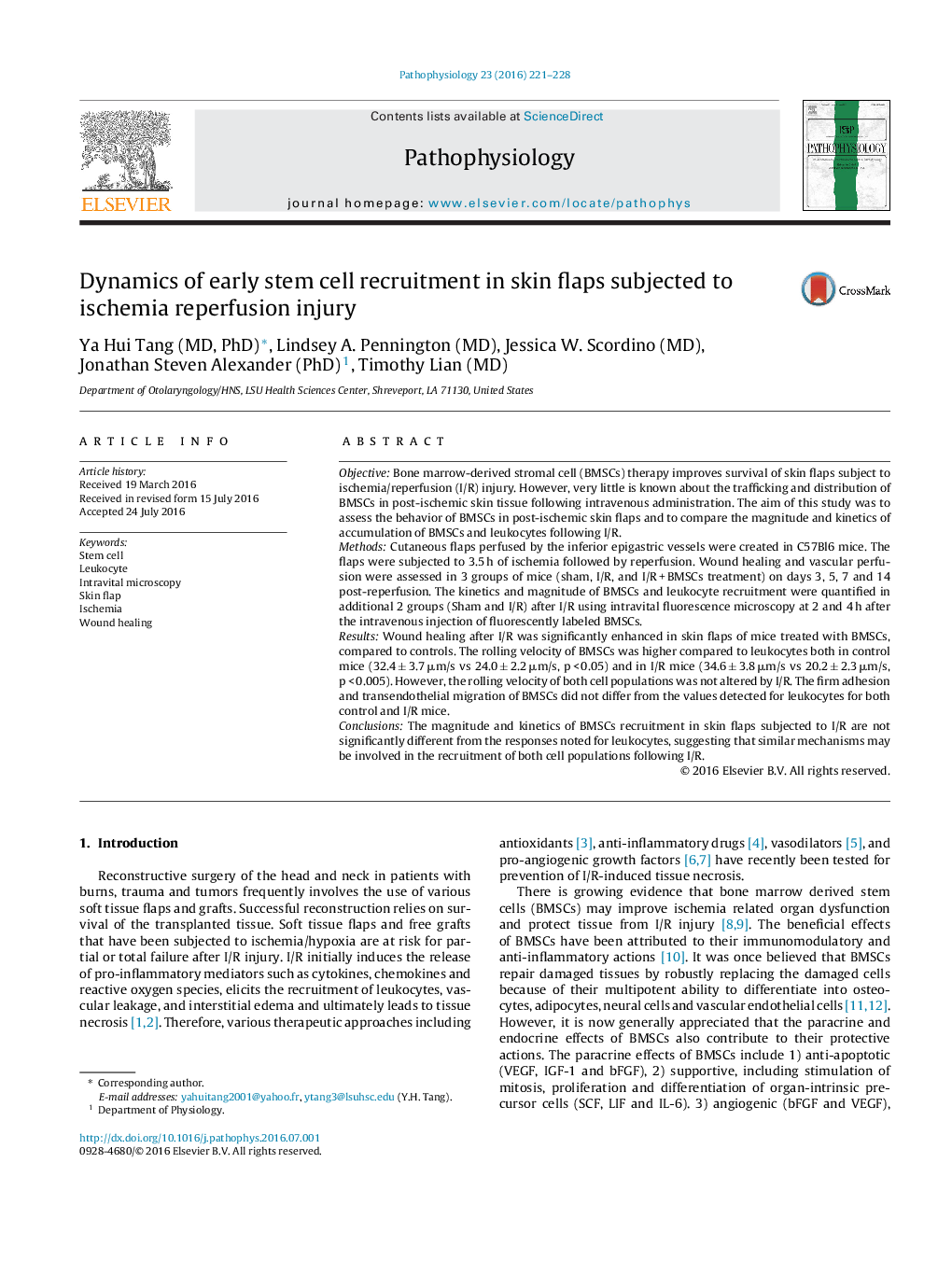| Article ID | Journal | Published Year | Pages | File Type |
|---|---|---|---|---|
| 4136931 | Pathophysiology | 2016 | 8 Pages |
ObjectiveBone marrow-derived stromal cell (BMSCs) therapy improves survival of skin flaps subject to ischemia/reperfusion (I/R) injury. However, very little is known about the trafficking and distribution of BMSCs in post-ischemic skin tissue following intravenous administration. The aim of this study was to assess the behavior of BMSCs in post-ischemic skin flaps and to compare the magnitude and kinetics of accumulation of BMSCs and leukocytes following I/R.MethodsCutaneous flaps perfused by the inferior epigastric vessels were created in C57Bl6 mice. The flaps were subjected to 3.5 h of ischemia followed by reperfusion. Wound healing and vascular perfusion were assessed in 3 groups of mice (sham, I/R, and I/R + BMSCs treatment) on days 3, 5, 7 and 14 post-reperfusion. The kinetics and magnitude of BMSCs and leukocyte recruitment were quantified in additional 2 groups (Sham and I/R) after I/R using intravital fluorescence microscopy at 2 and 4 h after the intravenous injection of fluorescently labeled BMSCs.ResultsWound healing after I/R was significantly enhanced in skin flaps of mice treated with BMSCs, compared to controls. The rolling velocity of BMSCs was higher compared to leukocytes both in control mice (32.4 ± 3.7 μm/s vs 24.0 ± 2.2 μm/s, p < 0.05) and in I/R mice (34.6 ± 3.8 μm/s vs 20.2 ± 2.3 μm/s, p < 0.005). However, the rolling velocity of both cell populations was not altered by I/R. The firm adhesion and transendothelial migration of BMSCs did not differ from the values detected for leukocytes for both control and I/R mice.ConclusionsThe magnitude and kinetics of BMSCs recruitment in skin flaps subjected to I/R are not significantly different from the responses noted for leukocytes, suggesting that similar mechanisms may be involved in the recruitment of both cell populations following I/R.
